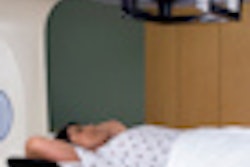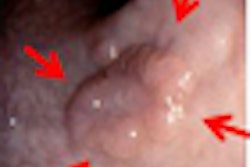
NEW YORK (Reuters Health), Feb 9 - In women with early invasive breast cancer, hypofractionated radiotherapy regimens -- with fewer, larger fractions and lower overall dose -- do not cause more adverse effects or worse body image than the global standard.
But while overall quality of life appears to be improved with the alternative regimen, chronic morbidity remains a problem for at least five years, say the authors of a February 8 online paper in The Lancet Oncology.
Their conclusion is based on results from two randomized Standardization of Breast Radiotherapy (START) trials. Women who had undergone breast-conserving surgery or mastectomy self-rated the effect of radiotherapy on cosmesis and breast, arm, and shoulder symptoms for up to five years.
In START trial A, doses of 39 Gy and 41.6 Gy were given in 13 fractions over five weeks and compared with the standard international regimen of 50 Gy in 25 fractions. Trial B compared the same standard dose with 40 Gy in 15 fractions over three weeks.
In earlier publications, the researchers reported that in both trial A and trial B, the lower total doses given in fewer fractions provided similar rates of tumor control and tissue damage as the international standard fractionation schedule.
The quality of life assessments involved 1,080 trial A participants and 1,037 trial B subjects. Each completed questionnaires at baseline and at least once more. Quality of life was also assessed with the EORTC general cancer scale (European Organization for Research and Treatment of Cancer).
On the whole, breast subscale scores -- for symptoms of pain, swelling, oversensitivity, and skin problems; and pain, swelling, or difficulty moving the shoulder, hand, or arm -- declined significantly from baseline to 60 months. Pain in the arm and shoulder affected up to a third of patients, and moderate or marked shoulder stiffness was reported by 20%.
Forty percent of women reported moderate or marked concerns on at least one of 10 body-image items, but these improved over time with no significant differences between regimens.
However, the rate of moderate or marked change in skin appearance was significantly lower for the 39 Gy regimen in trial A (HR 0.63) and for the 40 Gy regimen in trial B (HR 0.76) compared with the standard regimen. The 41.6 Gy and 50 Gy regimens in trial A did not differ significantly.
Similar trends were observed for other postradiotherapy effects on breast shrinkage and hardness and breast symptoms. The authors observed that differences between regimens tended to occur within one year and then persist.
There were other end points that differed between the 41.6 Gy and 39 Gy regimens in trial A, including breast hardness since radiotherapy, oversensitivity in the area of the affected breast, change in breast appearance, and skin appearance since radiotherapy (hazard ratios 0.72 to 0.79).
Lead author Dr. Penelope Hopwood, from the Institute of Cancer Research, Surrey, and her associates in the U.K. note that the type of surgery, or whether or not a radiotherapy boost to the tumor bed was given, did not alter the relative effects of the different schedules.
These self-ratings "strengthen evidence in favor of hypofractionated regimens, with a potential for fewer adverse effects on the normal breast tissues," Dr. Hopwood and associates conclude.
They plan ongoing follow-up to assess the pattern and severity of effects from radiotherapy, some of which arise later than five years.
In a commentary, Dr. Julie B. Schnur from the Mount Sinai School of Medicine, New York, writes, "Hopefully, the work by this group will inspire both researchers and clinicians to make understanding and assessment of patients' experience a top priority."
Lancet Oncology 2010.
Last Updated: 2010-02-08 19:47:22 -0400 (Reuters Health)
Related Reading
Radiation for early breast cancer: 3 weeks may be as good as 5 to 7, November 5, 2009
Copyright © 2010 Reuters Limited. All rights reserved. Republication or redistribution of Reuters content, including by framing or similar means, is expressly prohibited without the prior written consent of Reuters. Reuters shall not be liable for any errors or delays in the content, or for any actions taken in reliance thereon. Reuters and the Reuters sphere logo are registered trademarks and trademarks of the Reuters group of companies around the world.



















